As featured in HR Future Magazine
77% of professionals are experiencing burnout at a rate we've never seen before, and the number of people that changed jobs last year has more than doubled. On top of that, managing an employee base in a virtual or hybrid work environment has placed challenges on companies that they've not had to deal with in the past. In order to navigate the Great Resignation, companies need to have a solid retention strategy.
What is a Psychologically Safe Workplace?
A great place to start is ensuring your company fosters a psychologically safe workplace, which begins with a shared belief amongst the team that they are all safe to share ideas, confront issues, and take interpersonal risks. A few key indicators of an unsafe work environment include a lack of communication, harassment, unethical behavior, disrespect, high turnover, poor work-life balance, lack of boundaries, and a cut-throat culture. In 2021, MITSloan Management Review found that the number one reason people were leaving their jobs was because of a toxic culture and people are 10 times more likely to leave due to toxic culture than compensation.
Google’s well-known Project Aristotle study spent two years analyzing 180 teams to help the business understand the secrets to team effectiveness. Before conducting this study, Google believed the highest-performing teams were comprised of the best people — whether that be from a diversity of experience, credentials, etc. However, what they learned was that the highest-performing teams were actually those that had psychological safety. These were the teams where people felt safe to share ideas, speak up, and make mistakes. They all had an equal say amongst the team, and their voice was heard and valued.
New Employees Bring Ambiguity
When you hire a new employee, you don’t know if they’re going to stay. With 30% of new hires leaving their workplaces before reaching the 90-day mark, a poor hiring decision could quickly cost a company thousands of dollars and hundreds of hours of lost productivity. When a full-time employee quits within one year of starting their job, the organization they worked for loses at least 33% of their annual salary cost, which can easily equate to $15,000 or more. This is just the expense of losing one employee before their first anniversary, if this happened five times it would cost an employer over $100,000 in replacement fees.
Tools and Practices Needed to Create a Safe Work Environment
It is clear that companies need to focus on creating a safe workplace if they intend to retain their employees and nurture high-performing teams. Below are some of the frameworks to begin adapting your company culture.
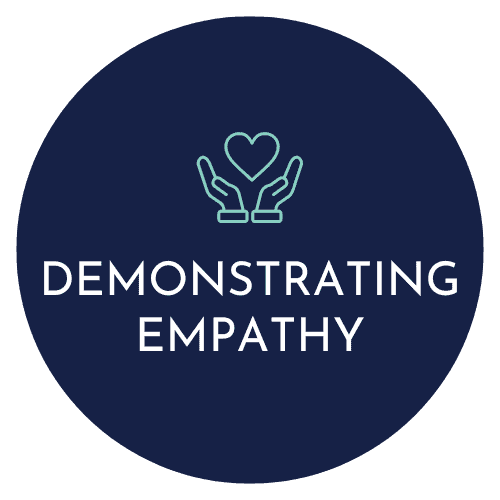
In order to establish a sense of safety and understanding in the workplace, it is essential to foster and encourage an empathetic environment. You can do this by asking questions to better understand — challenging your biases and prioritizing employee wellness. Implement these practices and lead by example so that others follow suit.
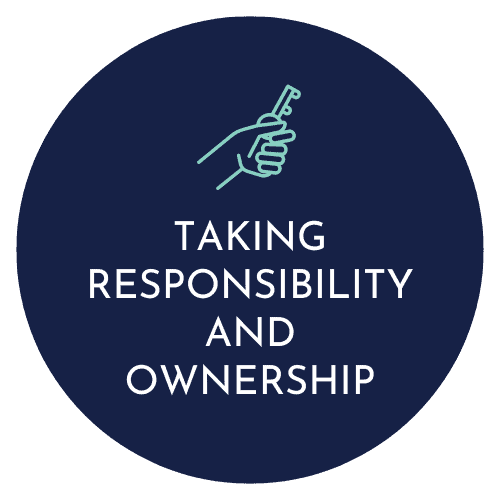
We are all human — everyone makes mistakes. Operating in a workplace that accepts and embraces failure is key to creating a safe work environment. People will feel safe to admit when they mess up and will have the space to learn from their mistakes.
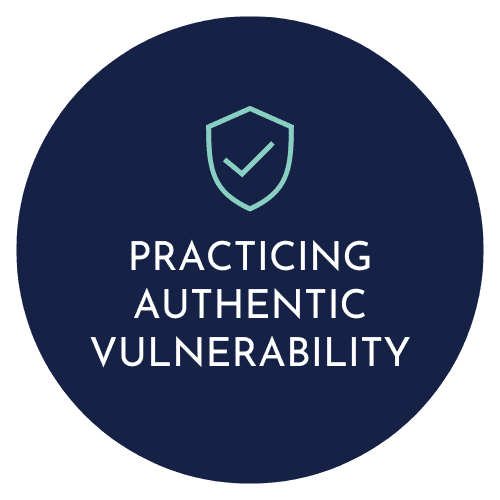
This happens when we allow ourselves to show our humanity. We all face challenges, and it is important that we own and embrace this in our authenticity with one another. Collectively, we can support each other and stay adaptable. If people show up authentically, they are more likely to feel like they belong, contributing to a safer, more accepting work environment.

One of the biggest disconnects I see in corporations is people not sharing feedback with each other, which leads to a lack of understanding and alignment. It is vital to foster and create a culture that leans into challenges, choosing to resolve conflicts over creating drama or talking about situations behind each other’s backs. The latter two examples are the toxic mimic of connection, which is the default when people aren’t leaning into challenging conversations. When they embrace challenging conversations, they are able to look beyond themselves and see the bigger picture, coming to an agreement collectively. Ultimately, agreements are much more likely to be followed than set expectations. This allows everyone to operate arm-in-arm through challenges when they arise — because they inevitably will.
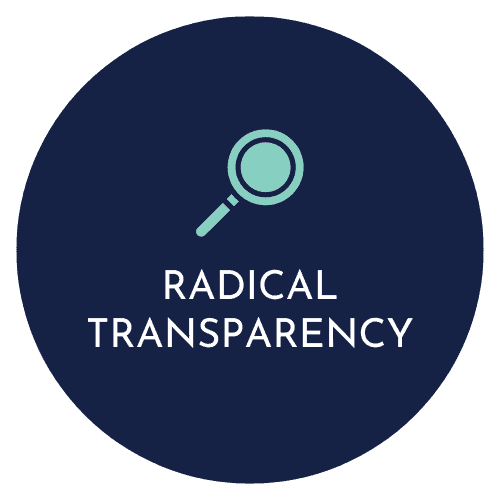
Avoid creating an environment where there are “people who know” and “people who don’t know” the ongoings of the business. If companies aren’t transparent or if there is uncertainty, employees will create their own stories, and typically, those stories tend to be worst-case scenarios. Try to be as open and transparent with your organization as possible so they don’t have to make assumptions. In doing so, they will feel a greater sense of inclusion and engagement because they feel trusted.
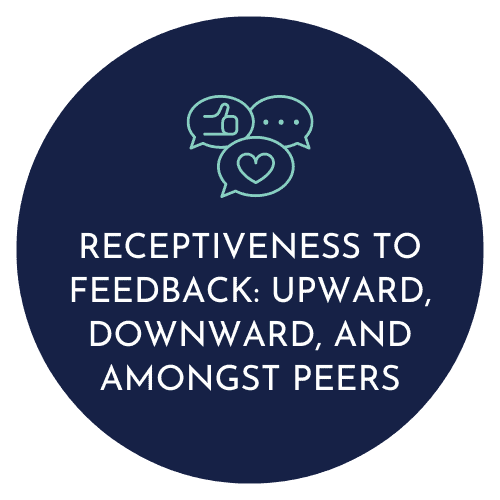
It is important to instill a framework for delivering effective feedback. At Activate 180, we have a guide that we teach for delivering effective feedback. This guide will help remove emotion or accusation from the conversation, which can cause the discussion to become charged. With each party, make sure you get an opt-in, clearly state your intentions, speak from your own personal perspective of what’s happening, and don’t make assumptions.
Example:
- Opt-In: "Are you open to some feedback?"
- Situation: "I’ve noticed that…"
- Example(s): "I saw this happening when…"
- Other Perspective: "I’d love to hear your thoughts and perspective on this."
- Agreements: "Moving forward, are you willing to…"
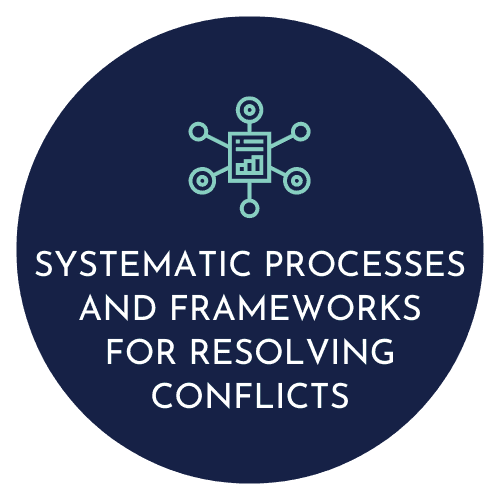
Implement guidelines for effective communication agreements amongst the team, which could range from clearing conversations to feedback to communication agreements. For instance, if a misunderstanding or misalignment occurs, there could be an agreement that it is confronted within 48 hours. That way, it gives people enough time to process, sort out where they stand on the matter, and then be able to share their perspective to confront the challenge. Additionally, it is important that employees feel comfortable and safe going to human resources or management about a conflict.
Another great tool is the clearing conversation framework. Clearing conversations happen when all parties gain perspective alignment through conversation after an event has created disconnection. It serves as a powerful tool to resolve conflict. At Activate 180, we created a guide to having these effective clearing conversations:
- Situation: Explain the situation and the impact. Describe the facts and intentions, respect feelings, and show empathy.
- Perspective: Share your own perspective and allow the other person to share their side of the story. Acknowledge that they can have a totally different perspective.
- Examples: Give clear examples to support your story. Who, when, how.
- Agreements: Agree on the next steps, be clear on who is doing what, where, when, and how, etc.
- Key Takeaways: Share your key takeaways with one another and end on a positive note.
If a workplace is ready to turn around its current culture, it needs to have these beliefs modeled and embraced by leadership, or else it won’t be possible. Effective communication and transparency are the crucial first steps. Priorities include creating an environment where feedback is encouraged, practiced, and woven into the fabric of the culture. This allows for a space where the team does not hold on to resentments and instead, they stay connected and have a clearing conversation when conflict does arise.
Creating a safe workplace is not only beneficial for the well-being of your organization, but also for creating the highest-performing, most effective teams. Begin by implementing some of these processes and frameworks, creating a standard for the organization to follow.
